Not All Leads Are Created Equal
The Current State of Trade Show Lead Generation
Trade shows and events are expensive, time-consuming, and chaotic. When all the costs pile up, a trade show may feel more like an expense than an investment. But there’s more to trade show attendance than going “because that’s what companies like us do” and “because we went last year.” And it’s more than a list of expenses on a spreadsheet.
When it comes down to it, companies invest in trade shows for a greater return in sales. 72% of exhibitors attend trade shows for lead generation because of the target-rich environment. Trade shows give companies the rare opportunity to meet face-to-face with decision makers. CEIR research has found that 81% of the attendees have buying authority, and 92% of attendees are actively searching for new products. In short, trade shows are a hot zone for hot leads.
In today’s digital, fast-paced buying environment, attending a trade show can also offer companies a glimpse into the elusive buyer’s journey. You can meet with leads, all at different stages of their journey, and gain valuable insights into your target audience. And, most importantly, you can generate high quality, high priority leads to follow up with post-show.
92% of trade show attendees are actively searching for new products
Let’s explore the lead generation process at trade shows, why we must treat leads differently, and best practices for maximizing opportunities from shows.
The Buyer’s Journey at a Trade Show
According to a CEB and Google study, consumers complete 57% of their buying experience before ever speaking to sales. In our digital age, people rely on websites, ads, and videos to learn more about a company. Which means that prospects will spend almost 2/3 of their time self-selecting until they reach out to sales. And it also means that companies only have true visibility into the last 1/3 of the buyer’s journey.
Today’s marketers are searching for ways to adapt to the new way of buying and attain more visibility. This struggle will continue to evolve as technology grows and expands, and as buyer’s expectations shift more and more. But, fortunately, there is one way to interrupt the self-selecting buyer’s experience: in-person events and trade shows.
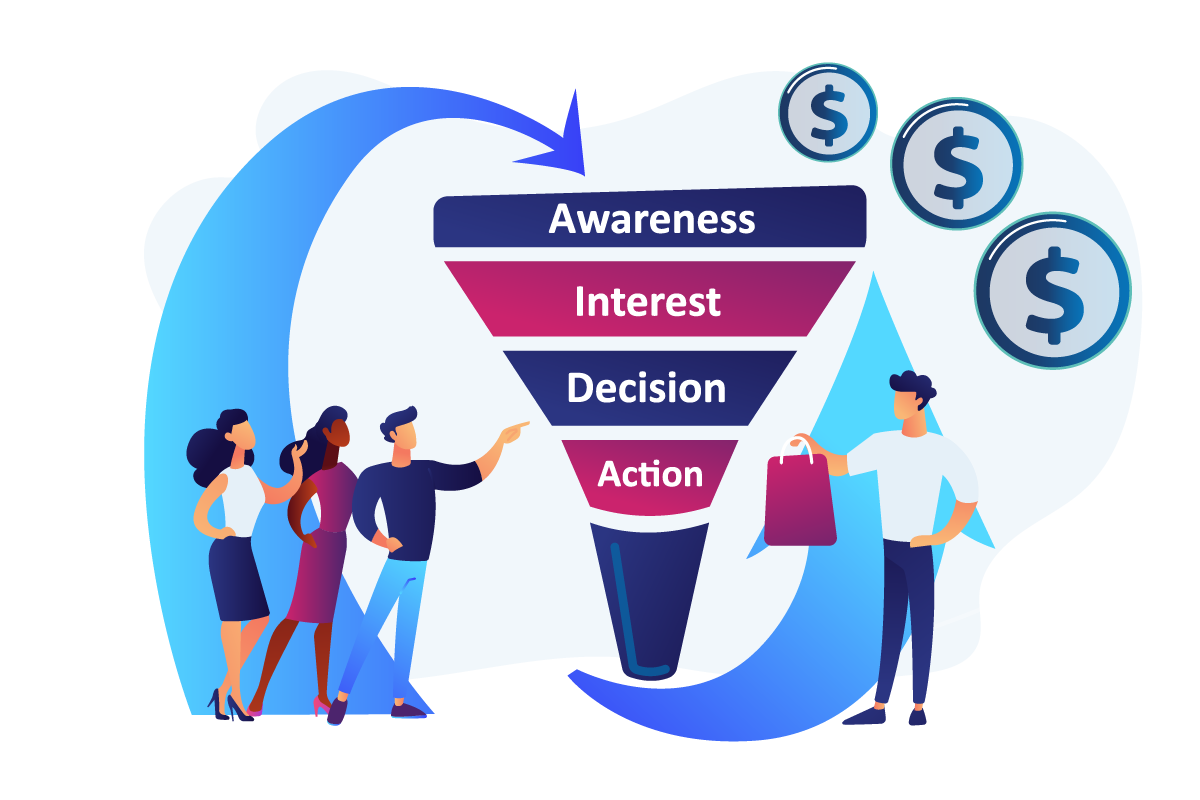
At A Trade Show, you interact with prospects all at different points of their buyer’s journey
At a trade show, you interact with prospects all at different points of their buyer’s journey. Your booth reps can engage with prospects who typically wouldn’t reach out to sales yet. Plus, you gain helpful insights into how your audience self-selects and where they are in the sales process.
For the most part at a trade show, you will encounter event attendees within one of three categories in the buyer’s journey: idea-aware stage, problem-aware stage, and vendor-aware stage.
Idea-aware stage—The lead starts learning there is a problem
Problem-aware stage—The lead delves into the problem and begins researching options
Vendor-aware stage—The lead compares vendors and selects a solution
Different Types of Trade Show Leads
Along with the different stages of the buyer’s journey, you will encounter different types of trade show leads in the booth. Trade Show attendees vary from those ready-to-buy to those first hearing your company name. The fatal mistake companies make at shows is treating all leads the same. In reality, when you capture leads, you see a variety of Sales Qualified Leads (SQLs), dozens of Marketing Qualified Leads (MQLs), and tons of Marketing Leads (MLs).
Every company has their own unique distinctions, but here’s the most common definitions of these three types of leads that you will engage with at a trade show:
Sales Qualified Leads (SQLs)—Also referred to as hot leads. These leads have clear pain points, are ready to buy, and have the means to buy. On their buyer’s journey, they are typically vendor-aware. At the event, they will likely ask your booth reps specific questions and set up a demo/call.
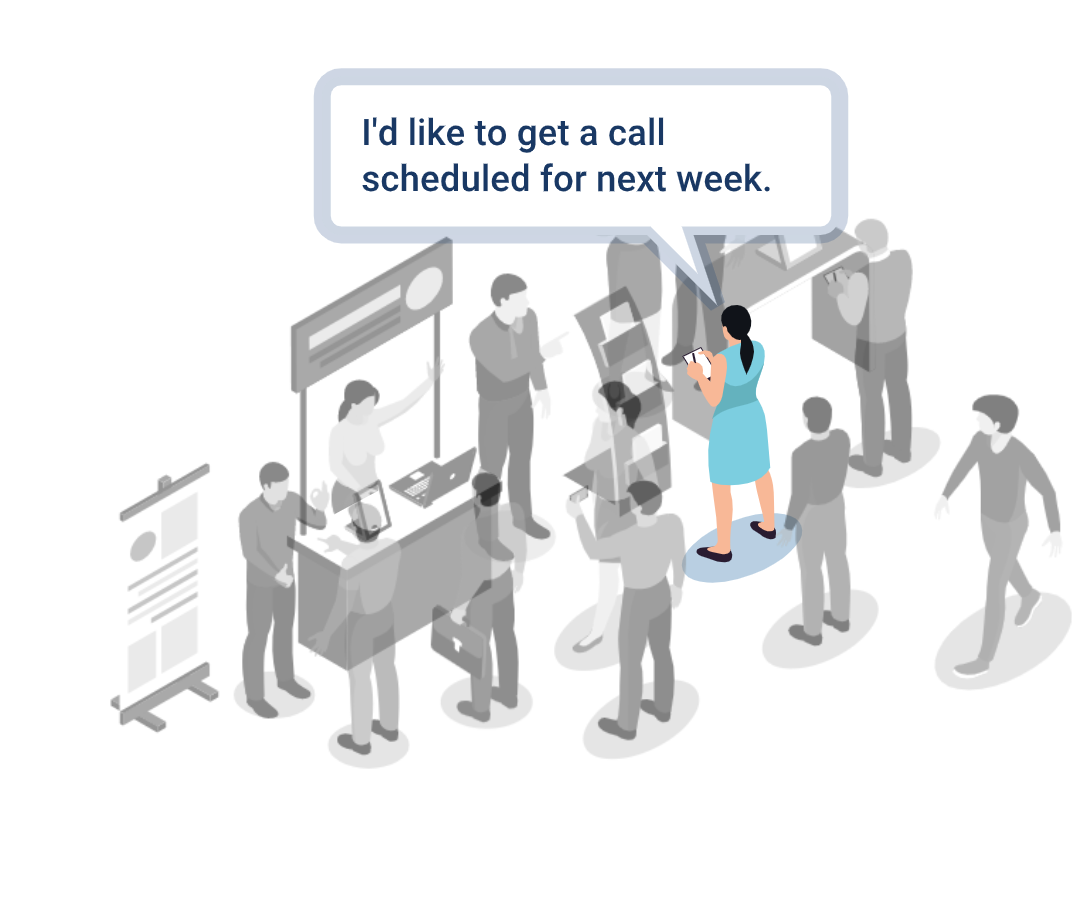
Marketing Qualified Leads (MQLs)—Also referred to as warm leads. These leads have pain points, but may lack budget or timeline to be a perfect fit. On their buyer’s journey, they are typically problem-aware. At the event, they are likely to request more information and discuss their pain points.
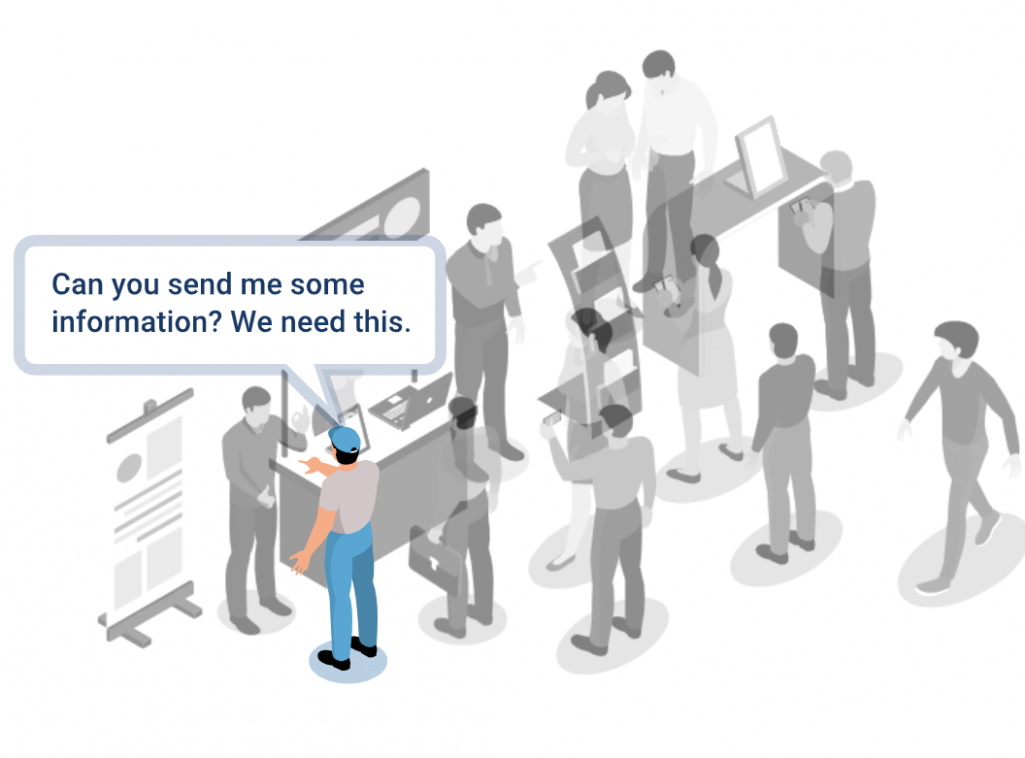
Marketing Leads (MLs)—Also referred to as cool leads. These leads may not yet realize they have a problem or do not know what your company offers. On their buyer’s journey, they are typically idea-aware or even right before that stage. At the event, they will likely stop by for free swag or for a friendly chat.
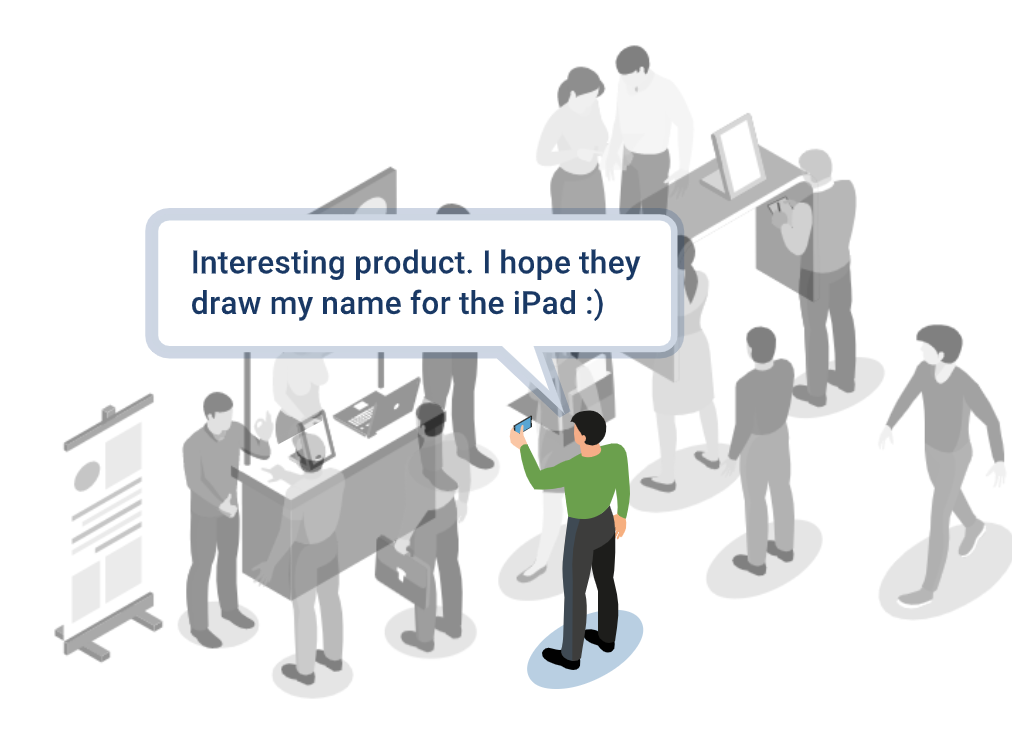
The Dangers of Treating All Leads the Same
According to a Salesforce Training study, 85% of companies fail to follow up with leads post-show. After dropping thousands of dollars, the majority of exhibitors never capitalize on the valuable leads they captured—the very reason most of them attend the show in the first place. They end up with trade shows as an expense, not an investment.
Where is the disconnect between trade show lead retrieval in the booth and post-show follow up? Why are many great trade show leads following through the cracks?
The root problem is treating all leads the same. The biggest mistake a team can make at events is to capture leads and then put them all in the same bucket. Since sales reps only care about SQLs and filling the sales pipeline, they will avoid digging through a pile of mixed leads. In most cases, the reps move on to other more pressing tasks to get more business. Which explains Salesforce Training’s findings that only 15% of companies follow up with leads. If the sales reps think the event leads are garbage, then they will end up in the trash bin.
This situation also causes discord between the sales and marketing teams. Sales blames marketing for the bad leads, while marketing blames sales for not following up post-show. This further drives a wedge between the two teams, as well as tanks the company’s event ROI, lead to a not so successful trade show.
The Benefits of Lead Segmenting
Not all leads are created equal. Your team will encounter different types of leads, at different stages of the buyer’s journey. Through lead segmenting, you can better reach your audiences, align your teams, and close deals.
At shows, you will have a mix of idea-aware, problem-aware, and vendor-aware buyers. Using one generic pitch across the board will sabotage your event success. After all, vendor-aware buyers will have different questions and concerns compared to idea-aware or problem-aware buyers. Speaking to idea-aware prospects at the level of vendor-aware prospects will only scare them away, and vice versa. Instead, selling to each specific segment through personalized follow up and auto emails produces the best results. By separating leads during the lead capture process and speaking to each segment’s pain points, you open yourself up to more success.
The Best Way To Conduct Lead Segmenting At A Trade Show
Traditional lead capture solutions provide you with a spreadsheets of names and emails, making it almost impossible to be able to segment those leads. The best way to segment leads is to qualify and sort them during the lead capture process. With iCapture, an intelligent lead capture tool, you capture leads, qualify, and sort them on the spot. The lead data is then immediately sent from the trade show floor into your CRM. The qualifiers built into iCapture, send the trade show leads and the lead data to their appropriate campaigns in your CRM/MAP based on if they are an SQL, MQL, or ML. Having a lead capture solution that can segment on the spot, will save you time and increase your trade show results!
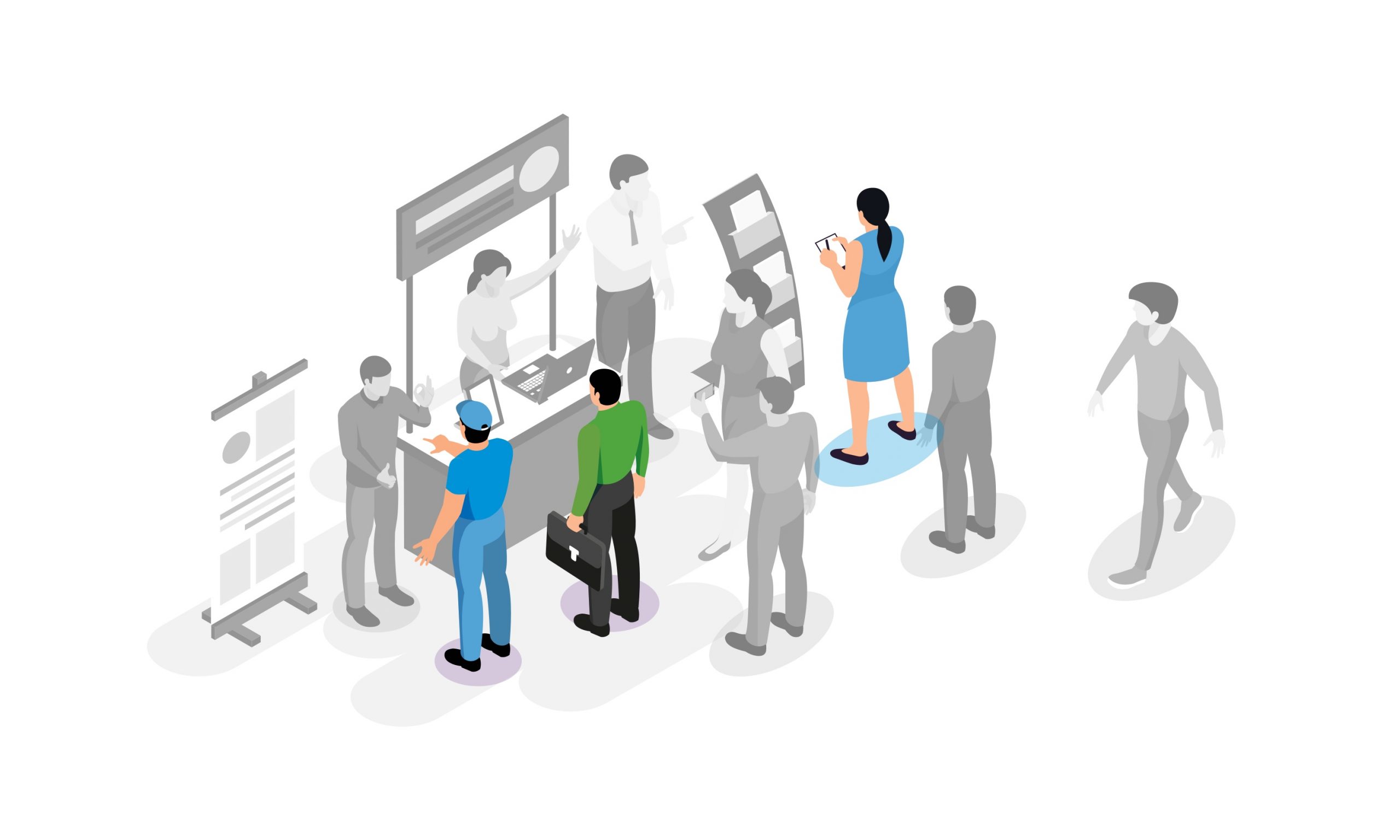
Not all leads are created equal. Your team will encounter different types of leads, at different stages of the buyer’s journey.
Along with being more targeted, lead segmentation also helps your follow-up time after a trade show. An InsideSales study learned that 50% of the deals go to the first company to follow up. So speed matters for closing deals post-show. Since SQLs are higher quality and priority, you want to get those leads to your sales team right away. Then your reps can follow up faster, close more deals, and increase your event ROI. If instead you lump all your leads together, your reps will follow up at random, if at all. By the time they get to any SQLs, those leads may have gone cold, or already made deals with your competitors.
Overall, lead segmentation helps with the following areas:
- Faster follow up
- More targeted campaigns
- Better meet prospect expectations
- Align sales and marketing
- Higher event ROI

Lead Qualifiers & Capitalizing on Hot Leads
To determine if leads are SQLs, MQLs, or MLs, you will want to use lead qualifiers in the trade show booth. For best practice, your lead capture form should be a list of quick questions to ask across all teams at every trade show. The lead capture questions should also be assigned to predefined values to determine a lead’s quality (such as the qualifier “having budget” being assigned to a hot lead). This removes the subjectivity of each rep qualifying the lead based on gut feeling. Plus, it standardizes the trade show lead capture process.
These lead qualifiers might include areas such as prospect pain points, product interest, new/current client, buying timeline, budget, etc. Since every company that visits a trade show is unique, you may want to rely on sales’ input to determine what matters most for your company. Once you have a list of questions and possible answers on your lead capture form, you can decide which answers match with what lead type. Automation, such as a mobile lead capture solution, streamlines this qualifying process. Overall, lead qualifiers enable your team to capitalize on the hottest leads first, as well as reach out with more relevance.
Conclusion
Trade show lead capture is at the very core of events. Companies from around the world exhibit for the hot, qualified opportunities coming out of a trade show. But how companies approach trade show lead capture plays an even bigger role in their event ROI. Successful teams qualify leads in the trade show booth and route the hottest leads to sales right away. This stops quality leads from falling through the cracks, and aligns teams and strategies. While trade shows are a target-rich environment, lead segmenting is the key to unlocking the potential at trade shows, capitalizing on hot leads, and raising ROI.